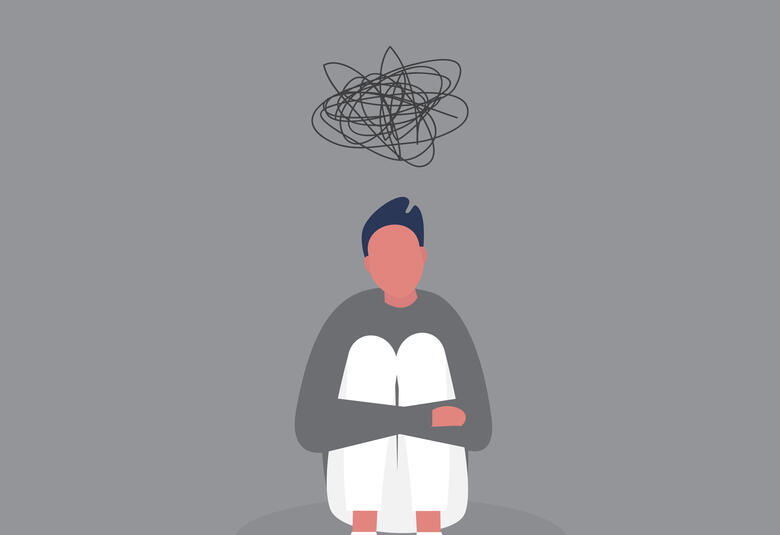Ongoing evaluation is essential in depression
Monitoring the full constellation of symptoms in depression, at diagnosis throughout treatment and beyond, is vital in order to achieve true and lasting functional recovery.12 There are a number of tools available to help you assess and quantify the symptoms of depression. Those that are administered by a healthcare practitioner are known as ‘clinician-rated’, while those completed by the patients themselves are termed ‘patient-rated’.
Clinician-rated assessments of depression
Two of the earliest scales developed to quantitatively assess depression are the Motgomery-Asberg depression rating scale (MADRS) and the Hamilton rating scale for depression (HAM-D or HRSD).3,6 These assessments have been used for more than 35 and 50 years respectively, in combination with additional, more domain-specific tests, to assess the complete symptom profile of patients with depression.3,6
Both the MADRS and HAM-D are used as standard in clinical trials in depression to measure treatment-related changes in symptom severity.5
MADRS: A 10-item scale that is sensitive to antidepressant efficacy.3,5 The ten constituent questions respectively assess: apparent sadness, reported sadness, feelings of tension, reduced sleep, reduced appetite, concentration difficulties, lassitude, inability to feel emotions, pessimistic thoughts and suicidal thoughts.3 Each component is rated by the patient on a scale of 0 (none at all) to 6 (very severe), providing a maximum total score of 60. The patient’s total score then indicates the severity of their condition as below:5
- 0-10: Remission
- 11-29: Mild to moderate depression
- 30-60: Severe depression
HAM-D or HRSD: This 17-item scale is one of the earliest to be developed for depression.5 It assesses symptom severity according to patient-rated scores for each of: depressed mood, inappropriate guilt, suicide, insomnia, work and leisure, retardation, agitation, anxiety, hypochondriasis, insight, weight loss and somatic symptoms.6
Of the 17 questions, nine are scored on a five point scale, ranging from 0 (absent) to 4 (severe), and eight are scored on a three point scale, ranging from 0 (absent) to 2 (clearly present).6 This provides a maximum total score of 54, with higher scores indicating greater symptom severity, as below:14
- 0-7: Normal
- 8-16: Mild depression
- 17-23: Moderate depression
- ≥24: Severe depression
Patient-rated assessments of depression
A number of patient-rated assessments of depression are also used. These enable the subjective reporting of depressive states and allow us gain insight into the patient’s experience of depressive episodes. The scales outlined below are the most commonly used patient-rated assessments. However, it is important to note that this is not a complete list, and many others are used around the world.
PHQ-9: Scores each of the nine DSM-5 depression criteria from 0 (not at all) to 3 (nearly every day). This questionnaire can help make criteria-based diagnoses of depression and is used to measure depression severity.7 The PHQ-9 has a maximum possible score of 27, and can be interpreted as below:8
- ≤4: Minimal depression
- 5–9: Mild depression
- 10–14: Moderate depression
- 15–19: Moderately severe depression
- 20–27: Severe depression
ZUNG SDS: A 20-item self-report index that covers a range of symptoms, including the psychological, affective, cognitive, behavioural and somatic aspects of depression.5 The subject rates each item on a scale of 1 (a little of the time/rarely) to 4 (most of the time/always), depending on how frequently each symptom occurs.9 A maximum possible score in this assessment is 80, with interpretation brackets as below:10,11
- ≤49: Normal
- 50–59: Minimal to mild depression
- 60–69: Moderate to severe depression
- ≥70: Severe depression
QIDS-SR: Developed with the aim of addressing the limitations of the HAM-D. These most notably include: a failure to assess all symptom domains as defined in DSM guidelines, an unequal weighting between different symptom domains, and a lack of clear, well-defined symptom criteria in each item of the scale.11
It is a 16-item, patient-reported scale of symptom severity in depression, which assesses the nine key symptoms of the condition; insomnia/hypersomnia, low mood, appetite/weight changes, impaired self-perception, concentration difficulties, loss of interest/pleasure, suicidal ideation, psychomotor agitation and fatigue.11 While not an exclusive assessment of cognitive function, it can provide insight into any cognitive difficulties a patient may be experiencing. A maximum total score of 27 can be achieved, with scoring interpretations as seen below:10,11
- ≤5: No depression
- 6–10 Mild depression
- 11–15: Moderate depression
- 16–20: Severe depression
- 21–27: Very severe depression
BDI: measures the severity of depressive symptoms at the point of assessment.5 It contains 21 items, each focused on different symptom domains associated with major depression, as defined by DSM criteria. Each item contains four statements, numbered from 0 to 3, and the patient selects which statement most closely relates to their own experience. In addition to assessing classical emotional and physical symptoms of depression, such as sadness, guilt, suicidality, irritability, appetite disturbances and fatigue, it also evaluates cognitive symptoms in the domains of decisiveness, attention and motivation.5,15 The maximum possible score on the BDI is 63, with scoring interpretation brackets as described below:10,15
- ≤9: Minimal depression
- 10–16: Mild depression
- 17–29: Moderate depression
- ≥30: Severe depression
Assessment of functioning
While not a direct measure of symptom severity or treatment success, an assessment of the functional impact of depression may provide an alternative insight into a patient’s condition and progress. This can be particularly useful during the initial stages of diagnosis, as impaired functioning may indicate the presence and severity of any emotional or cognitive symptoms, which could then be assessed.12
Sheehan Disability Scale (SDS): a 3-question self-report tool for measuring functional impairment and functional progress during the past month. Each question is rated between 0 and 10, and scores can be interpreted as below:13
- 0: No disability
- 1–3: Mild disability
- 4–6: Moderate disability
- 7–9: Marked disability
- 10: Extreme disability




